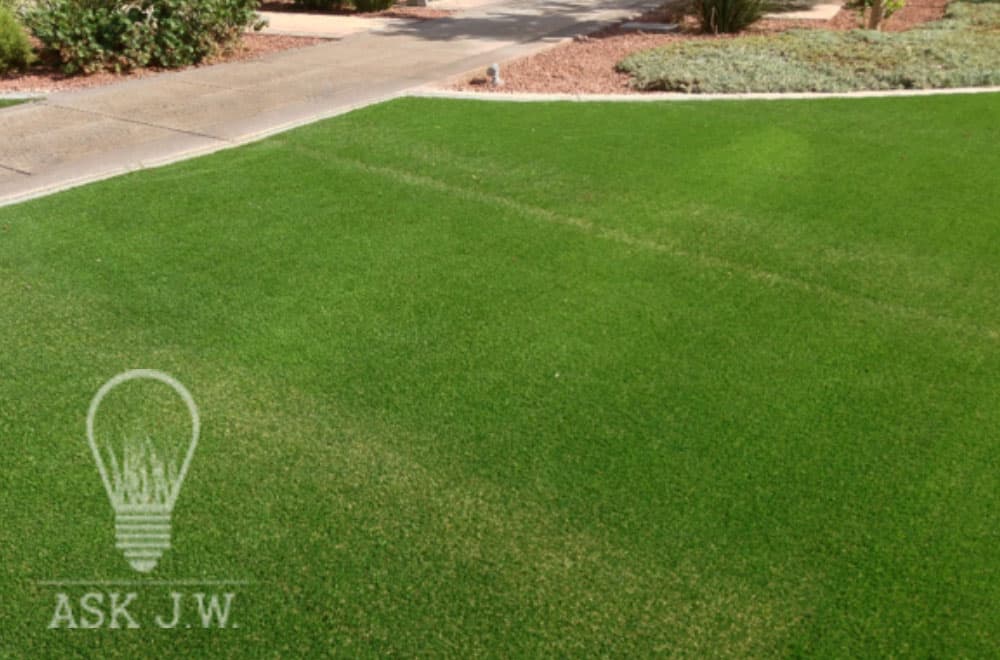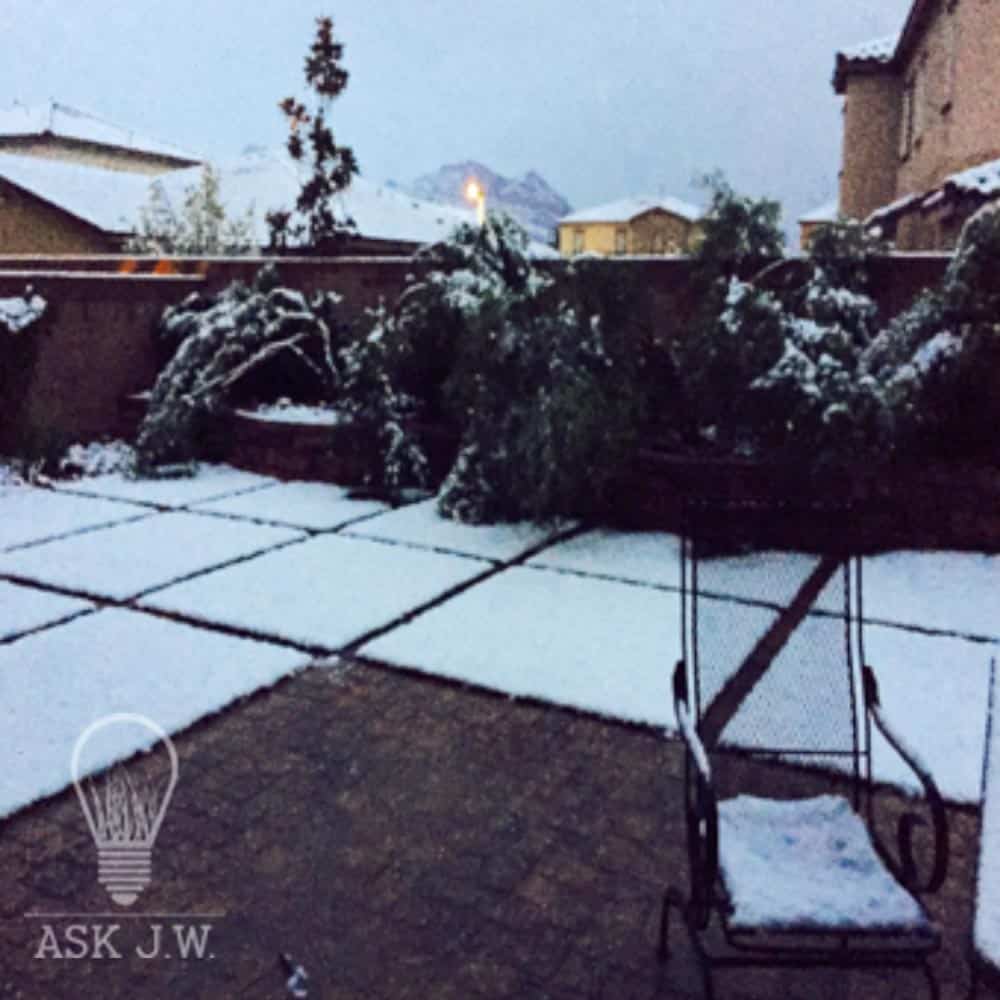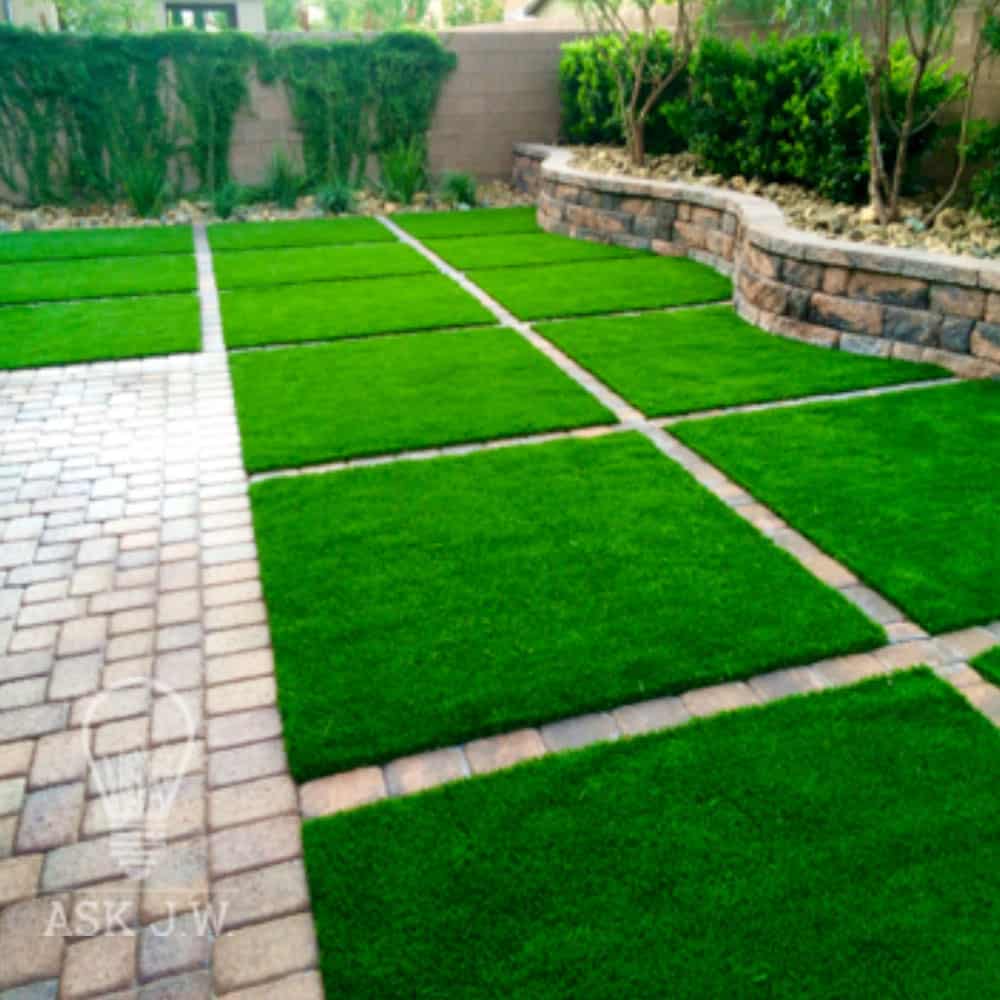
Cold weather synthetic turf installation can be more challenging than warmer install conditions. In this months “ASK JW” Column, you will be provided installation tips that will make your cold weather installations efficient and less stressful.

Always store your rolls of synthetic grass so the freezing temperatures will not leave flat spots in the turf roll. If you have to store the turf outside, rotate the roll occasionally to prevent flat spots from occurring.
***LET’S BEGIN!***
Cold weather “Flat Spots” in rolls of synthetic turf.
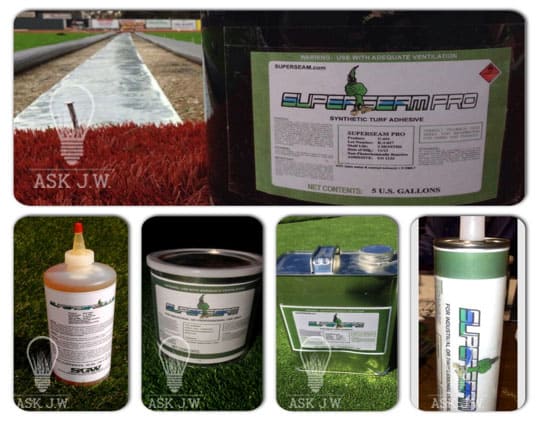
To be a successful synthetic turf contractor, I recommend SGW Superseam Pro Adhesive for all of your seaming needs as it has been tested against the leading competition. SGW Superseam Pro Adhesive has been physically tested and approved in below freezing temperatures. If you happen to purchase your seaming adhesive at a hardware store, understand a majority of hardware store adhesives are water based and contain high percentages of fillers. These inexpensive water-based adhesives may freeze under cold weather conditions and subsequently cause seam failure when ambient temperatures arise causing seam rupture due to thermal expansion and contraction. Store SGW Superseam Pro Adhesive in a warm environment prior to use, it will maintain the glue’s viscosity (thickness) and provide a more pliable adhesive to work with.
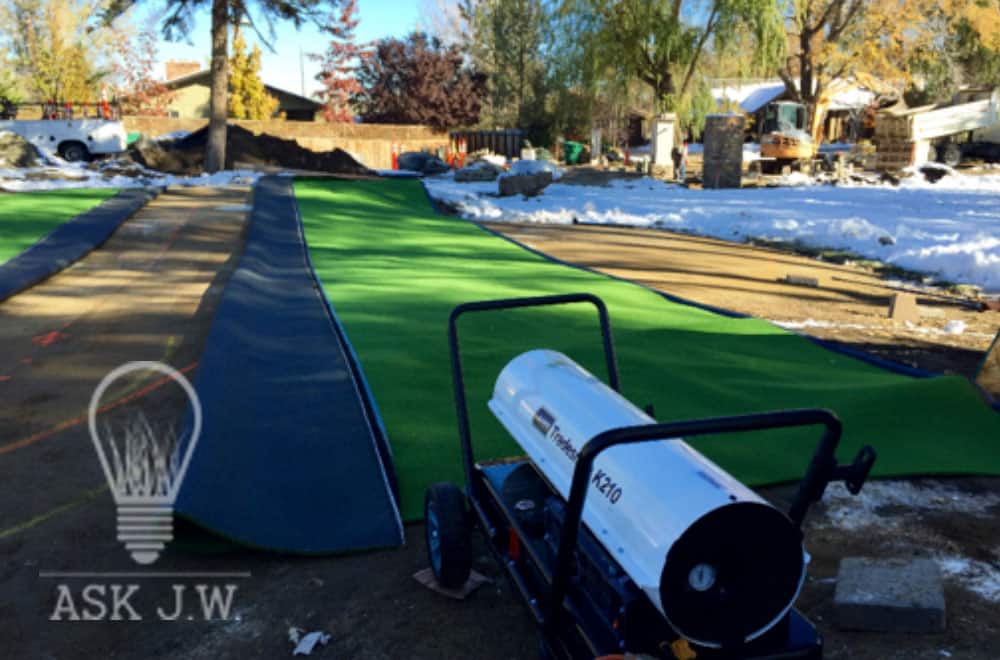
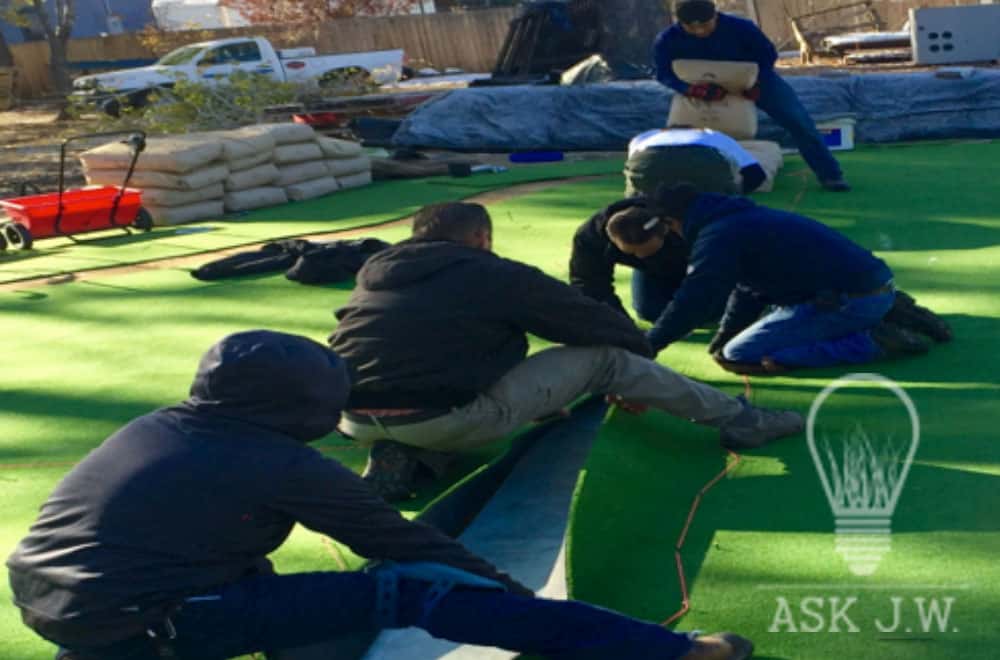
Roll out your synthetic turf and allow it to lay flat on the prepped surface to remove any wrinkles. In freezing temperatures you may need to have an external heater available to expedite this process. This will make your installation more efficient and prevent aggressively stretching the turf to reach its flatness on the compacted subgrade.
With the rise in temperature throughout the day, the synthetic turf will expand and/or contract. Make sure you secure each side of the connecting seams with nails, spikes or staples to prevent the seam from moving prior to placing the SGW Superseam Pro adhesive.
When seaming in cold weather, the two edges that are to be seamed may be stiff/hard and achieving a successful seam will be more difficult. After adhesive placement and adjoining the two sections of turf together, place SGW infill bags on the center of the seam to ensure the cold edges don’t lift. Make sure that a 1/8 inch of SGW Superseam Pro Adhesive is placed. Excessive amounts of adhesive may seep up and through the seam and drainage holes due to the placement of bag weight.

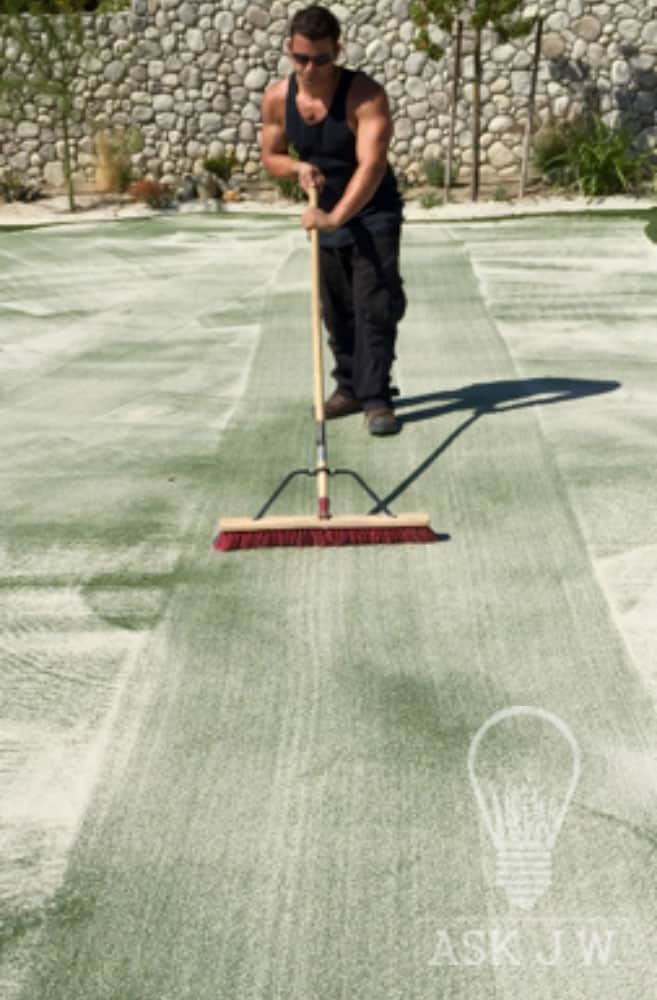
When the seams are cures you may need to use a wire brush and fibrillate the fibers back to their original state prior to placing the infill.
When placing the infill the surface must be dry in order for the infill to reach the base of the fibers. If the surface has any moisture the infill will stick to the top and will have to dry out or be removed to complete this process. Make sure all infill is stored in a dry controlled area at all times.
When the temperatures warm up and the snow or ice has melted, most of the melted snow and ice will drain through the drainage holes. Use a leaf blower and clean the top surface. After cleaning, I recommend using a power broom to rejuvenate the fibers to bring back the esthetics of the synthetic turf.
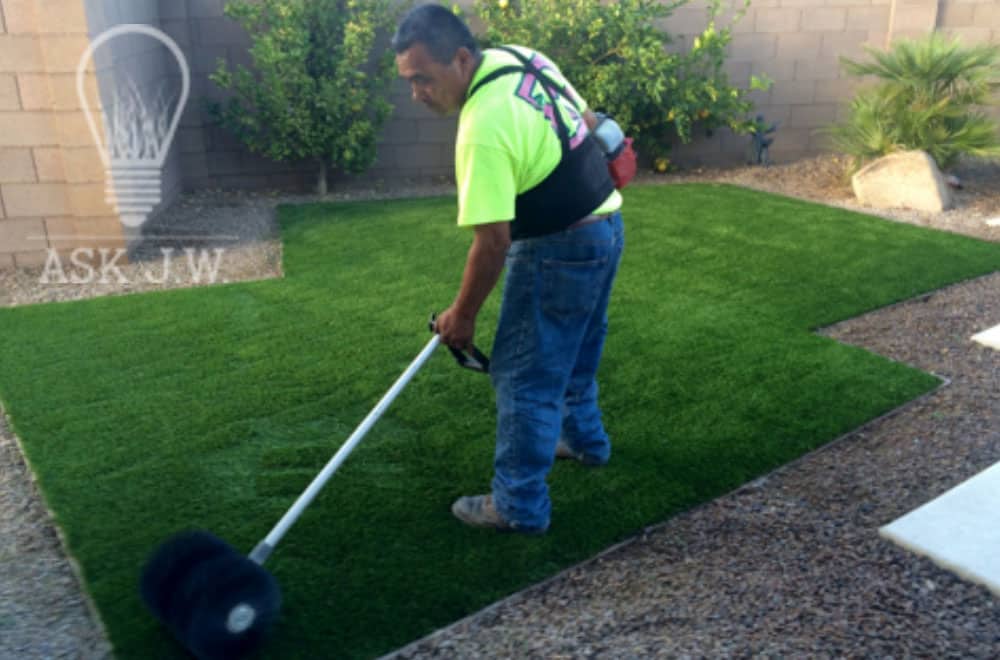
Stay tuned for next month’s “Ask JW” column for synthetic grass install tips and tricks! For more information or to contact J.W.: askjw@sgwcorp.com or call 888-846-3598.
